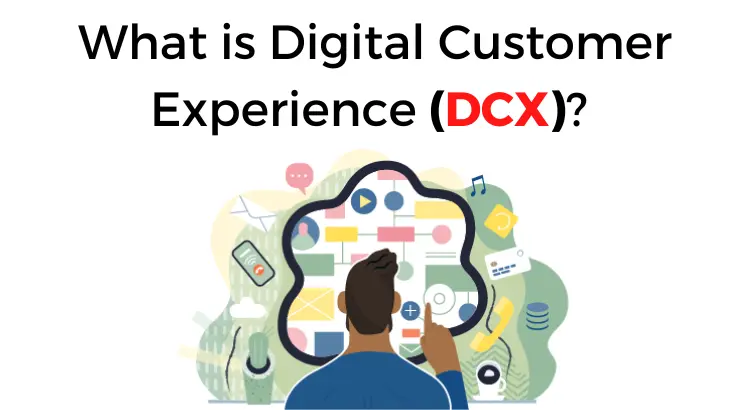The phrase “digital customer experience” (DCX) is gaining traction in business. The expression defines how a firm interacts with its customers online.
Customers may utilize digital channels such as a company’s website, mobile app, social media, and online self-service platforms to contact and interact with the business. The customer journey is covered from initial awareness and research through purchase, after-purchase help, and advocacy.
Digital customer experience encompasses several touchpoints, such as your website, mobile application, and social media presence, and how they help customers feel welcomed, informed and appreciated.

Let’s look in further detail at the components of a digital client experience. To help you, NICE explains what is digital customer experience.
Why is Digital Customer Experience (DCX) Important?
Digital customer experience is vital to a business since it may significantly affect customer satisfaction, loyalty, and advocacy. A gratifying digital customer experience may result in an increase in conversions, an increase in customer lifetime value, and an improvement in the company’s reputation. A negative digital customer experience may result in customer churn, lost revenue, and brand damage.
Moreover, as more customer interactions occur online, the significance of the digital customer experience grows. In the contemporary digital age, customers expect to connect with companies through digital marketing channels and have a seamless, personalized experience.
Companies that provide an excellent digital customer experience will easily attract and retain customers, while those needing help just can’t compete.
How DCX Enhances Client Engagement
The digital customer experience strives to enhance the traditional customer care process by creating an interactive environment that invites customers to engage with the company in ways that are not always possible in person.
For instance, via digital channels such as social media or surveys, customers may receive product information or provide feedback on their encounters with a firm more readily. This allows businesses to respond faster and more accurately than ever before.
Using digital platforms for customer care also allows firms to strengthen their relationships with customers. Businesses may establish a network of loyal consumers who rely on them for high-quality products and services by communicating with customers on several platforms and promptly reacting to customer inquiries.
Over time, brand loyalty and revenues will increase as customers build a feeling of commitment to the company with which they transact.
Lastly, companies may use the data obtained via digital channels to discover crucial information about their consumers’ preferences, behavior, and satisfaction levels. These firms are better equipped for future success. After all, this information may be used to enhance products and services and, more precisely, target various marketing efforts.
10 Ways to Improve Digital Customer Experience

There are several ways to improve digital customer experience, including:
Conducting user research and testing:
Understand customer needs and preferences by conducting surveys, user testing, and analyzing data.
Optimizing website design and usability:
Make sure the website is easy to navigate, visually appealing, and mobile-friendly.
Providing online self-service options:
Offer online tools, such as FAQs and chatbots, to allow customers to find answers to their questions quickly and easily.
Improving customer service:
Ensure that customers can easily contact your company and receive prompt, helpful responses through digital channels.
Related Post: How to Improve Customer Satisfaction (10 Easiest Ways)
Personalization:
Use customer data to create personalized experiences, such as customized product recommendations.
Continuously monitoring and measuring:
Continuously gather data and measure the performance of different aspects of the digital customer experience to identify areas for improvement.
Continuously testing and optimizing:
Use A/B testing and other optimization techniques to improve the digital customer experience.
Building a customer-centric culture:
Encourage employees to think about the customer experience in everything they do and to work together to improve it.
Making use of customer feedback:
Gather customer feedback and use it to inform improvements.
Staying up-to-date with the industry:
Stay informed of the latest trends and best practices in digital customer experience.
Six Stages in Digital Customer Experience
The stages in digital customer experience typically include:

Discovery:
This is the initial stage where customers become aware of a company or product through various channels such as social media, online ads, or search engines.
Research:
In this stage, customers gather information about the company, product, or service through various sources such as the company’s website, customer reviews, or online forums.
Evaluation:
Customers use the information they’ve gathered to compare different options and make a decision about which product or service to use.
Purchase:
Customers make a purchase or engage with a service.
Delivery:
The product or service is delivered to the customer.
Post-purchase:
This includes the customer’s experience with the product or service after the purchase, including any customer service interactions or follow-up communication.
Final Words
Businesses that invest in DCX are better positioned for long-term success because it increases conversion rates, raises revenue, and encourages customer pleasure, loyalty, and advocacy.